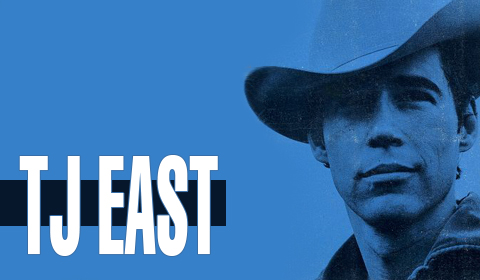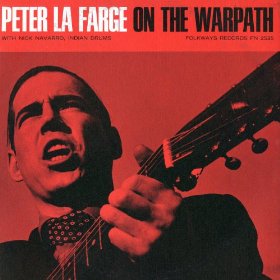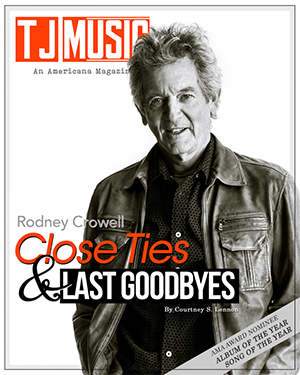
TJ EAST: Songs of the Seventh Generation
Native Americana Rising
By Kandia Crazy Horse
“And there are drums beyond the mountain
Indian drums that you can’t hear
There are drums beyond the mountain
And they’re getting mighty near”
The world is changed almost beyond repair, and there’s no end in sight. Air, water, earth all carry these ill changes, reflecting centuries of destructive decisions by western empires now so alienated from their natural heritage that their postmodern descendants yearn towards wisdom and ancient methods of salvation from the very peoples the iron will to urbanize and control attempted to drive to extinction. Within the realm of music, this seeking and desperate process has shone a light on the rising Native Americana movement – like the recent Women In Country spotlight, another corrective to the monolithic mainstream country establishment enamored of shallow sounds, even as the persistence of black country artists in/beyond Nashville remains a threat and conceptual hurdle. Between the poles of Oklahoman indie singer-songwriter Samantha Crain, rising jambands prophet Nahko Bear, and traditional Lakota flute virtuoso John Two-Hawks, I, a Powhatan country singer, and my cohort of fellow twangy acts across North America are bringing a new expression to the Americana genre, focused on our Seventh Generation waging battle for preservation of the Earth which nourishes us all. And unlike the dimmer lights of prevalent “bro country,” we can balance strong polemical songs about the Keystone Pipeline with delicately simple heartache balladry rarely seen in prime mainstream form anymore unless penned by Dolly Parton. On a quest for pure country in this time of crisis for the genre and the rural life that birthed and sustained it for nigh on a century, why not look to the most American of Americana artists for sonic renewal and hope? This is the hour when wringing one’s hands over Cole Swindell and decrying the facts that Nashville superstars’ pitiful rapping has banished primetime space for uncompromising oath upholders like Merle Haggard. The “drums beyond the mountain,” which Naragansett folksinger Peter La Farge sang of so hauntingly on his uncompromising and commercially unsuccessful 1962 debut, “Ira Hayes” And Other Ballads, are truly near.
Just this second half of the year unto now mere days until the Winter Solstice, the mounting turbulence of American society has brought multi-ethnic groupings of empire’s discontents out into the streets. Not rain, sleet or snow has curbed the protesters’ fury at the lack of equal justice; their growing strength stemming from the aboriginal-led Idle No More and Occupy movements’ impact on millennial youth bolstering cries for a new era of polemical music from them. Yet the material of a range of Native Americana artists from Keith Secola, Joanne Shenandoah, and Crystal Shawanda to Tracy Bone, Lila Downs, Leela Gilday, Leo Rondeau, and California Country’s Ojibwa honky-tonk man John McLeod has already been fruitfully mining this seam in the new century or asserting indigenous subjectivity in refutation of settler colonialism’s expanded mind games – even as Plains Cree round dance songs from the Canadian prairies have expanded and signaled a revolution in serving to score the protests of Idle No More. In the 21st century as in the 20th, poverty, discrimination, prejudice, alcoholism, and loss of land have darkly shadowed Indian Country, informing its’ roots singers and songs of a new wave perhaps most indebted to the postwar pioneer of voicing Native rights issues in sound: Peter La Farge.
 As part but still apart from the 1960s folk revival centered on Greenwich Village, La Farge led the vanguard featuring other Native American rising stars Karen Dalton, Floyd Red Crow Westerman, Buffy Sainte-Marie, and my own great influence Blackfoot, Woodstock festival icon Richie Havens (whose grandfather resettled at Long Island’s Shinnecock res via the Buffalo Bill Wild West Show), by foregrounding the subjectivity of his generation tormented by deracination and forced re-education at government and church-controlled schools. Rather than bask in an inherited European songbook or playact at being a Dust Bowl Okie like many of his slumming, non-native peers, La Farge founded the Federation for American Indian Rights (FAIR), and sung about then-current struggles of all disenfranchised peoples galvanized by WWII’s reordering of society to fight back as on “I’m An Indian, I’m An Alien”: “For the red man and the black man / The yellow, white and brown / We walk this road together / And this road is freedom bound.” Further, the first Village folkie to be signed by Columbia was already a proto-environmentalist in the 1950s, strengthening his lyrics with wisdom from Black Elk Speaks years ahead of any groundswell of sustained concern about the ravages of industrialization upon this land. But the largely unsung hero is most recalled today as the author of “Ballad Of Ira Hayes,” a song limning the heroic deeds of the WWII Pima veteran from Arizona iconicized in the photograph and monument of raising Old Glory at Iwo Jima Hill and Hayes’ subsequent sad demise. “Ira Hayes” bridged the gap to the annals of country history once its favorite outlaw son Johnny Cash covered it and built an entire conceptual protest album heavily under the influence of La Farge called Bitter Tears: Ballads of the American Indian.
As part but still apart from the 1960s folk revival centered on Greenwich Village, La Farge led the vanguard featuring other Native American rising stars Karen Dalton, Floyd Red Crow Westerman, Buffy Sainte-Marie, and my own great influence Blackfoot, Woodstock festival icon Richie Havens (whose grandfather resettled at Long Island’s Shinnecock res via the Buffalo Bill Wild West Show), by foregrounding the subjectivity of his generation tormented by deracination and forced re-education at government and church-controlled schools. Rather than bask in an inherited European songbook or playact at being a Dust Bowl Okie like many of his slumming, non-native peers, La Farge founded the Federation for American Indian Rights (FAIR), and sung about then-current struggles of all disenfranchised peoples galvanized by WWII’s reordering of society to fight back as on “I’m An Indian, I’m An Alien”: “For the red man and the black man / The yellow, white and brown / We walk this road together / And this road is freedom bound.” Further, the first Village folkie to be signed by Columbia was already a proto-environmentalist in the 1950s, strengthening his lyrics with wisdom from Black Elk Speaks years ahead of any groundswell of sustained concern about the ravages of industrialization upon this land. But the largely unsung hero is most recalled today as the author of “Ballad Of Ira Hayes,” a song limning the heroic deeds of the WWII Pima veteran from Arizona iconicized in the photograph and monument of raising Old Glory at Iwo Jima Hill and Hayes’ subsequent sad demise. “Ira Hayes” bridged the gap to the annals of country history once its favorite outlaw son Johnny Cash covered it and built an entire conceptual protest album heavily under the influence of La Farge called Bitter Tears: Ballads of the American Indian.
Of course La Farge, partly raised on his stepfather’s ranch in Fountain, Colorado, came of age amongst salt-of-the-earth cowboys and his fellow Indians, imbuing his music with a vanishing western authenticity from their lives and stories. Unlike Johnny Cash who was a consistent supporter of Native rights but offered up false Cherokee and Mohawk antecedents which he later recanted, former rodeo cowboy Peter La Farge could never attain the same cultural capital and relative commercial autonomy in folk or country & western and died prematurely in 1965. And this disparity was reflected in the disappointing August release of Sony’s Look Again to the Wind: Johnny Cash’s Bitter Tears Revisited featuring a host of perennial Americana darlings but no known aboriginal artists and several borderline dull performances. It does nothing to reverse the issues that led to La Farge’s inner torment and industry obscurity, while making much of being sparked by the fact that Cash himself considered Bitter Tears — denounced in 1964 by coast-to-coast country deejays and Billboard magazine alike — a crowning achievement of his career.
While any airing of La Farge’s songs is blessin’, one wonders why still in 2014, 50 years past his moment, such rigid barriers in country and Americana remain entrenched? Whether La Farge and Cree singer-activist Buffy Sainte-Marie, his female Village counterpart in bold topicality who began blazing a fierce path back then with It’s My Way, would have enjoyed a far smoother path if they’d navigated akin to Hollywood / pop / Nashville’s formerly incognito skins including Hank Williams (Choctaw, Tsalagi), Robbie Robertson (Mohawk) whose songwriting for The Band provided Americana’s virtual Ur-texts, and the first woman to ever hit #1 on the country music chart, Kitty Wells, (Cherokee) who walked on just last year (an’ goldarnit them charged rumors ‘bout Roy Rogers persist)? Another assemblage of various artists released during this last quarter, mostly hailing from above the U.S. border, is a comparatively rich collection that will doubtless serve as a foundational text for Native Americana in times to come: Light In the Attic’s Native North America (Vol. 1): Aboriginal Folk, Rock & Country 1966-1985. Sourced and curated by Vancouver DJ/journalist/record collector Kevin Howes over a 15-year period, Native North America spotlights a great parallel singer-songwriter to La Farge, Willie Dunn, whom we also sadly lost in 2013 just too soon to enjoy the revived interest and laurels for his songwriting this double-CD collection surely would have brought him. The Mi’kmaq/Scottish/Irish songwriter’s inexorable power shines through “I Pity The Country,” an astute, righteous track that carries on frank polemics where La Farge left off. Dunn bravely pushes back against the ever-present threat of cultural obliteration and the compilation follows suit in his honor. Native North America’s other star on par with Dunn is my fellow Algonquin artist Willy Mitchell who delivers the blistering “Kill’n Your Mind” with his Desert River Band. A bullet to the head courtesy of the police birthed Mitchell’s career; such brutal truths pervade Howes’ liners highlighting repressive backgrounds and demons that produced such singing and peerless songwriting.
The songs of Willie Dunn and those of the other First Nations, Métis, Inuit country and roots artists represented on these discs – first known Inuit rock band Sugluk from Salluit, QC near the Arctic Circle and Willie Thrasher, now a busker in Nanaimo, BC enjoying a live resurgence, at the head of the pack – are tales, sentiments, and aesthetic markers of creative people seeking not to assimilate but regain their lands, languages and above all sovereignty. The indelible sonic fingerprints from Hank Williams, classic Nuggets-esque garage-rock and Neil Young get recombined in unique ways, particularly potent on these writers’ lovesongs to our Mother the Earth: Thrasher’s gorgeous “Spirit Child,” Dunn’s “Son of the Sun,” Shingoose & Duke Redbird’s spellbinding “Silver River,” David Campbell’s “Sky-Man and the Moon.” Singing in both outright and poetic language of the hardships and intolerance endured, they sought their share of justice akin to their compatriots in America’s black revolution while differing on that movement’s legislative landmarks due to longterm reneging on treaty rights. This compilation frames a treasure trove of multi-lingual songs expressing the will to surmount centuries of being considered inferior if not horrifying “red devils” watching and preying from lugubrious woods (a central theme of the body of literature and popular belief that presaged penny dreadfuls, westerns and Americana, frankly). The passion of the ‘60s and early ‘70s heyday of fish-ins and other actions against many broken treaties now flowering again this decade with the web-linked global movement of indigenous peoples yields Americana magnificence for the ages.
While Sainte-Marie courted controversy by venturing to Nashville to break-in the country market before Bob Dylan cut Nashville Skyline, viewed as less artistically and commercially viable when she sang 1968’s “I’m Gonna Be A Country Girl Again” or “The Piney Wood Hills” (later a hit for Bobby Bare), and La Farge is simultaneously exalted/diminished as Dylan’s caretaker and influence, mostly all of Native North America’s artists were denied even paltry opportunities to record or expose their art through other media. Snubbed by mainstream radio, tormented by the wages of heritage denied, all save leading light Dunn lost public recognition in Canada early in their own careers and lifetimes until this chance at renewal. And yet, the current decade is lofting their heirs in Canada and the Western states who are able to deploy newer technologies and other more egalitarian resources on behalf of their creativity. The traditional large Native presence in country stems from the intermixing of Cherokee and Muscogee Creek and folk of African descent with Scottish immigrants in Appalachia and across the South; my own Pamunkey-African-Scottish roots in the foundational southeastern region, reared on the constant flow of exchange between “tribal” forms, bluegrass, and pre-1980 Nashville concoctions informs my songwriting and has led to more acute exploration of aboriginal voicings and mountain music on my next album, Canyons, to be released in 2015. Another thornier reason derives from the ways racist mythologies and imagery of Indians were promulgated through western cinema, causing constant attraction and repulsion in the subjectivity of earlier indigenous audiences who nonetheless found themselves fans of the midcentury singing cowboys. Then the 1960s ushered in a new hippie idealization of the noble savage and back-to-the-land emulation of native lifeways that radically changed such Young Hollywood luminaries as Marlon Brando and Nashville’s Outlaw wing rising behind Cash to perform on behalf of Native American causes – think Texan icon Willie Nelson who has claimed, “If you’ve ever seen an Indian head nickel you’ve got a pretty good idea of what I look like side-on with my hair down.” All across our Red Nation, we Native Americana artists are seamlessly country, bound to the land and the genre’s core of unvarnished storytelling as illuminated by our ceremony and histories. Our cross-cultural fusion offers far more to the country genre and Americana scene that’s raw, unflinching, and honest compared to confused if not desperate identity statements of hat acts stridently proclaiming a Redneck Soul when they’ve patently lost it.
I indulged in some tailgating on my youthful southern rock sojourn, and going western dancing at the honky-tonk never fails to be a joyous occasion, yet why cannot country strive for expressing a higher purpose down around Music Row and off in the margins both? Let this be the era when the original Americans’ twang comes to and remains in the center — and aboriginal histories no longer have to be excavated under duress for overdue meshing with the West’s collective story. Technology has overwhelmed and disrupted our lives, abused this land, requiring a spiritual shift that keepers of Song have led since the primordial age and must now again. We don’t ever want to be unable to feel a blade of grass, feel the wind dance upon our flesh; we don’t want to be lost naked and afraid in the dark. As Haudenosaunee leader Oren Lyons expresses about the seventh generation law, “We say that the faces of coming generations are looking up from the earth. So when you put your feet down, you put them down very carefully – because there are generations coming one after the other. If you think in these terms, then you’ll walk a lot more carefully, be more respectful of this earth.” Native artists, we embody this principle. Music has been our vehicle of gratitude and prayer for time untold; via retronuevo recorded ceremony we’re echoing the wake-up call throughout Turtle Island. Support a music of healing. Keep America Beautiful.
Willie Dunn – The Ballad of Crowfoot film
Latest posts by TJ Staff (see all)
- Song premier: Brooke Graham – “Merryachi Christmas” - October 31, 2022
- Sean Devine’s Here For It All - September 7, 2021
- Video Premier: “No One Gets Pulled Over on Christmas Eve” (The Smoking Flowers) and “Santa Claus is Dead” (Dee Oh Gee) - December 22, 2020

